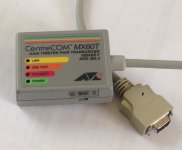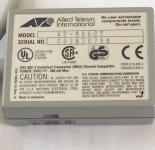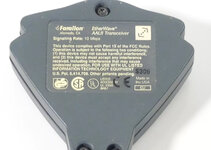If it helps my Allied Telesyn International adapter has a SQE heartbeat switch on one side re:
http://www.cisco.com/c/en/us/support/docs/lan-switching/ethernet/46786-12.html
"
The SQE heartbeat is designed to fix the problem in earlier versions of Ethernet where a host does not know if a transceiver is connected. It does this by providing about one usec of collision after the end of a transmission. The Ethernet controller in the host will record this event, and set a flag where the host can check on it.
Heartbeat/SQE is only returned from the transceiver to the host or unit to which it is connected. It is not put on the net.
Heartbeat must be disabled for repeaters or the net will go down, due to repeaters repeating the carrier. It does not matter what type of carrier, they just repeat it. If heartbeat is on, the following occurs:
Repeater transmits to port A.
- Repeater stops transmit to port A.
- Port A returns heartbeat.
- Repeater indicates carrier.
- Repeater repeats carrier to all other ports and does a fragment extend which expands the 1 usec to 9.6 usec.
This in itself is not a problem, bandwidth is simply wasted. Some repeaters will count the heartbeat as a collision, and partition after 32 transmits to that segment.
At times, a host will record this event as a collision or framing error, and think the packet will have to be resent, wasting more bandwidth. It might even think that there are no good packets, and that all of them have errors.
If there are two stations with heartbeat on, then the extended fragments will collide with each other. After 32 transmits to the pair, both segments will shut down due to auto-partition. This will happen almost immediately after the first packet is sent, since they will be echoing back and forth the same fragment until one or both segments partition.
At times, a host will record the returned extended fragment heartbeat as a collision, framing error, or slot violation, and believe that it will have to retransmit, using more bandwidth.
Summary
- The heartbeat is local only between the transceiver and some sort of host system.
- If the host system is a computer, bridge, or router, the heartbeat is a function of whether the user enables it, and whether the software and hardware support SQE.
- If the host system is a repeater, hub, or concentrator, the heartbeat must be off. This also includes concentrators with internal briges or routers.






